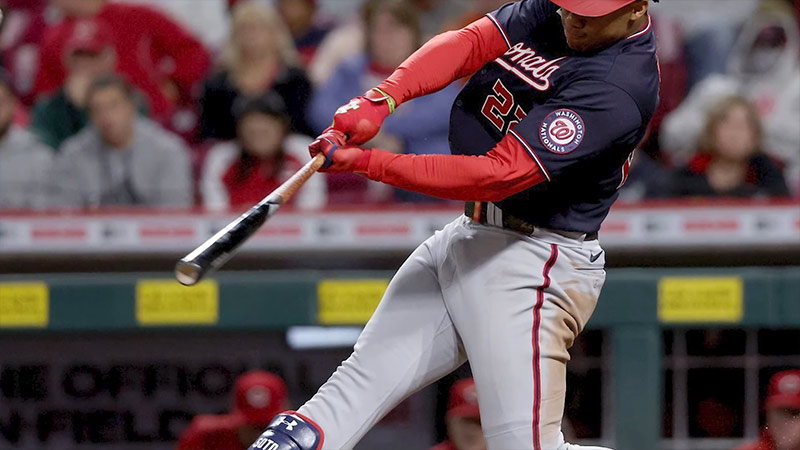Managing a fantasy baseball team involves making crucial choices on who to start at various positions, considering player performance, matchups, and team needs.
The success of your team relies on finding the right balance, optimizing categories, and staying informed about player news. In this guide, we will explore the key factors to consider when setting your lineup in fantasy baseball.
We will delve into assessing player performance, evaluating matchups, managing injuries and rest, positional considerations, maximizing categories, and the importance of staying updated and flexible.
By understanding these aspects and implementing effective strategies, you can gain a competitive edge and make informed decisions to maximize your team’s potential.
What Is Fantasy Baseball?
Fantasy baseball is a popular game that allows participants to create and manage virtual teams of real-life baseball players. It is a form of fantasy sports where participants act as team owners and compete against each other based on the statistical performance of the players they have selected.
In fantasy baseball, participants draft or acquire players from real-life Major League Baseball (MLB) teams to form their own fantasy rosters.
Throughout the baseball season, team owners earn points or rankings based on the performance of their selected players in various statistical categories, such as batting average, home runs, runs batted in, strikeouts, and earned run average.
Participants can make strategic moves, such as trading players, making lineup adjustments, or picking up free agents, to improve their team’s performance.
Fantasy baseball is a way for fans to engage with the sport, showcase their managerial skills, and compete against friends or other participants for fun or even for prizes in some cases.
Things to Consider While Choosing Whom to Start
There are some essential facts you need to consider to choose who to start in fantasy baseball.
1. Assessing Player Performance

Recent player performance is crucial when making lineup decisions in fantasy baseball. Players who have been performing well are more likely to continue their success, while those in a slump may struggle to produce.
Analyzing recent performance allows you to identify players who are on hot streaks or showing signs of improvement. These players can provide a boost to your team’s statistics and give you an edge in your matchups.
Additionally, paying attention to trends helps you spot players who may be on the decline, allowing you to make adjustments accordingly.
To analyze player statistics, it’s essential to look beyond basic numbers such as batting averages, home runs, and RBIs. Advanced metrics like on-base percentage, slugging percentage, and weighted on-base average provide a more comprehensive picture of a player’s offensive performance.
Additionally, considering recent performance is important. Look at a player’s stats over the past few weeks or month to evaluate their current form. Focus on indicators like batting average, on-base percentage, slugging percentage, and any notable changes in their approach or plate discipline.
Provide Tips for Tracking Player Performance and Staying Updated
- Utilize fantasy baseball platforms or apps: Most fantasy baseball platforms offer tools to track player performance, including statistical breakdowns, trends, and recent news. Take advantage of these resources to stay updated on player performance.
- Follow reliable sports news sources: Stay connected with reputable sports news sources that provide regular updates on player injuries, lineup changes, and performance analysis. This helps you make informed decisions based on the most up-to-date information.
- Monitor social media: Follow beat reporters, team accounts, and respected fantasy baseball analysts on social media platforms. They often provide timely updates and insights on player performance and injury news.
- Use player trackers and alerts: Consider using player trackers or setting up alerts for specific players. This way, you can receive notifications whenever there’s a significant development related to the players on your roster.
- Keep an eye on daily lineups: Check the daily lineups for each team to ensure your players are starting. This is especially important for players who may have been dealing with injuries or sharing playing time.
2. Evaluating Matchups
Source: medium.com
Studying pitcher-hitter matchups is crucial when making lineup decisions in fantasy baseball. Different pitchers pose varying challenges to hitters based on their pitching style, repertoire, and strengths.
Some pitchers may excel at striking out hitters, while others may induce ground balls or have difficulty against left-handed or right-handed batters.
By analyzing pitcher-hitter matchups, you can identify favorable or unfavorable situations for your players and make informed decisions on who to start.
The Impact of Ballpark Factors and Pitcher Tendencies
Ballpark factors play a significant role in evaluating matchups. Some ballparks are known to be hitter-friendly, providing a boost in offensive production, while others may favor pitchers with larger dimensions or unique characteristics.
Consider how a particular ballpark’s dimensions, wind patterns, or altitude may affect the outcome of a game. Additionally, take note of pitcher tendencies, such as their home/away splits, performance against specific types of hitters, or struggles in certain conditions. These factors can influence the potential success or struggles of your hitters.
3. Considering Injuries and Rest

Monitoring player injury status and availability is essential in fantasy baseball. Injuries can significantly impact a player’s performance and playing time.
It’s crucial to stay updated on the injury reports to know if a player is dealing with any ailments that could limit their effectiveness or keep them out of the lineup altogether.
By staying informed about injuries, you can make timely lineup adjustments and avoid starting players who are unlikely to contribute positively.
The Impact of Players Coming Off the Disabled List
When players come off the disabled list (DL), it’s important to assess their readiness and potential impact. While they may be returning to the lineup, they could still be recovering or not at full strength.
Pay attention to news updates and any reports on their progress during rehab assignments. Players returning from injuries may need a few games to regain their rhythm and timing. Consider starting them in favorable matchups or gradually easing them back into your lineup.
4. Positional Considerations

In this case, it is essential to consider each position properly.
- 3B: Third base is typically a power-hitting position where you expect players to contribute to home runs, RBIs, and runs scored. Consider a player’s ability to hit for power, their batting average, and their run-producing opportunities in the lineup. Defensive versatility and eligibility at other positions can provide added flexibility.
- OF: Outfielders contribute across multiple categories, including batting average, home runs, stolen bases, runs scored, and RBIs. Assess a player’s combination of power, speed, and ability to get on base. Consider their spot in the batting order, a matchup against opposing pitchers, and any recent hot or cold streaks.
- Utility: The utility spot allows flexibility to slot in any position player. It’s an opportunity to maximize production by utilizing a player who may not have a specific position but contributes well in various categories. Look for a player who excels in a particular stat category that your team needs to bolster.
To make specific recommendations, it’s important to consider factors such as recent performance, matchups, and your team’s needs. Review player statistics, assess their recent performance and trends, and consider the matchups they’ll face against opposing pitchers.
For the 3B spot, consider starting Evan Longoria once he returns from the DL, as he provides a well-rounded contribution in all categories. Prior to Longoria’s return, Pablo Sandoval can be a reliable option for consistent production.
In the outfield spots, Hunter Pence and Bryce Harper are strong choices due to their ability to contribute in multiple categories. For the third outfield spot, consider matchups and recent performance to choose between Michael Bourn and Michael Cuddyer.
5. Maximizing Categories

Source: yahoo.com
Balancing categories in head-to-head leagues is crucial for maximizing your chances of winning matchups. In head-to-head formats, you compete against another team each week, and the team with more categories wins takes the victory for that week.
By balancing your roster to excel in multiple categories, you increase your chances of winning the majority of the categories each week. This strategy helps you accumulate wins over the course of the season and positions your team well for playoff contention.
- Power: To optimize power categories such as home runs and RBIs, target players with a track record of hitting for power. Look for players with high slugging percentages, strong isolated power (ISO), and favorable home ballpark factors. Additionally, prioritize players who hit in the heart of potent lineups, as they often have more opportunities for RBIs.
- Speed: If you’re aiming to dominate stolen bases and runs scored, prioritize players with speed. Target players who consistently steal bases and have high success rates. Look for leadoff hitters or players with high on-base percentages, as they are more likely to have opportunities to steal bases and score runs.
- Batting Average: To optimize the batting average, prioritize players with high contact rates and a history of maintaining a solid average. Look for players with low strikeout rates and a good eye for the strike zone. It can also be beneficial to target players with high line drive rates, as they tend to have a better chance of getting hits.
6. Staying Updated and Flexibility

Staying updated on player news and conducting ongoing research is essential for success in fantasy baseball. Player performance, injuries, lineup changes, and other news can have a significant impact on your team’s performance.
By regularly monitoring player news, injury reports, and lineup announcements, you can make timely adjustments to your lineup and take advantage of opportunities such as emerging players or favorable matchups. Keeping up with the latest information allows you to make informed decisions and stay ahead of your competition.
Flexibility is a key attribute in fantasy baseball. Player performances can vary, injuries can occur, and matchups can change. Being open to making adjustments and being proactive in responding to changes is crucial.
If a player is struggling or gets injured, consider benching them in favor of a player who is performing well or has a favorable matchup. Additionally, monitor your team’s strengths and weaknesses in specific categories and make adjustments accordingly to optimize your chances of winning.
Being flexible allows you to adapt to changing circumstances and maximize your team’s potential.
FAQs
How can I effectively manage my lineup in fantasy baseball to balance different categories?
To balance categories, it’s important to assess your team’s strengths and weaknesses in each category. Identify the categories where you are strong and prioritize maintaining your advantage in those areas.
For weaker categories, target players or make lineup adjustments to improve your performance in those specific categories. Regularly monitor your team’s standings in each category and make adjustments accordingly.
How often should I make changes to my lineup in fantasy baseball?
The frequency of lineup changes depends on various factors such as player injuries, performance trends, and matchups. It’s recommended to review your lineup on a daily basis to stay informed about player availability and matchups.
However, the specific frequency of changes can also depend on the league format and roster size. In more competitive leagues, making frequent adjustments can give you an edge, while in larger or more casual leagues, weekly adjustments may be sufficient.
What should I consider when deciding between starting a player with a favorable matchup versus a player with better overall statistics?
When deciding between a player with a favorable matchup versus a player with better overall statistics, consider the degree of the matchup advantage and the significance of the statistical difference.
If the matchup advantage is significant and the statistical difference is minimal, it may be wise to start the player with the favorable matchup. However, if the statistical difference is substantial, it’s important to weigh the potential impact of the matchup advantage against the player’s overall ability to produce.
How can I take advantage of platoon situations in fantasy baseball?
Platoon situations involve using different players based on their handedness (left-handed vs. right-handed) or the opposing pitcher’s handedness. Look for players who excel in specific matchups against pitchers of a particular handedness.
By utilizing platoon splits, you can optimize your lineup by starting players who have a higher likelihood of success against certain types of pitchers.
Pay attention to lineup announcements and use platoon players strategically to maximize production in favorable matchups.
Conclusion
Making effective lineup decisions in fantasy baseball requires careful consideration of various factors. Assessing player performance, evaluating matchups, staying updated on injuries, and adapting to category needs are all crucial elements of managing a successful team.
Balancing categories, optimizing specific areas of strength, and staying flexible with lineup adjustments are strategies that can give you an edge in head-to-head leagues.
By applying these strategies and staying engaged throughout the season, you can maximize your chances of success and enjoy a competitive fantasy baseball experience.
Thank you for your time. Best wishes to you.








